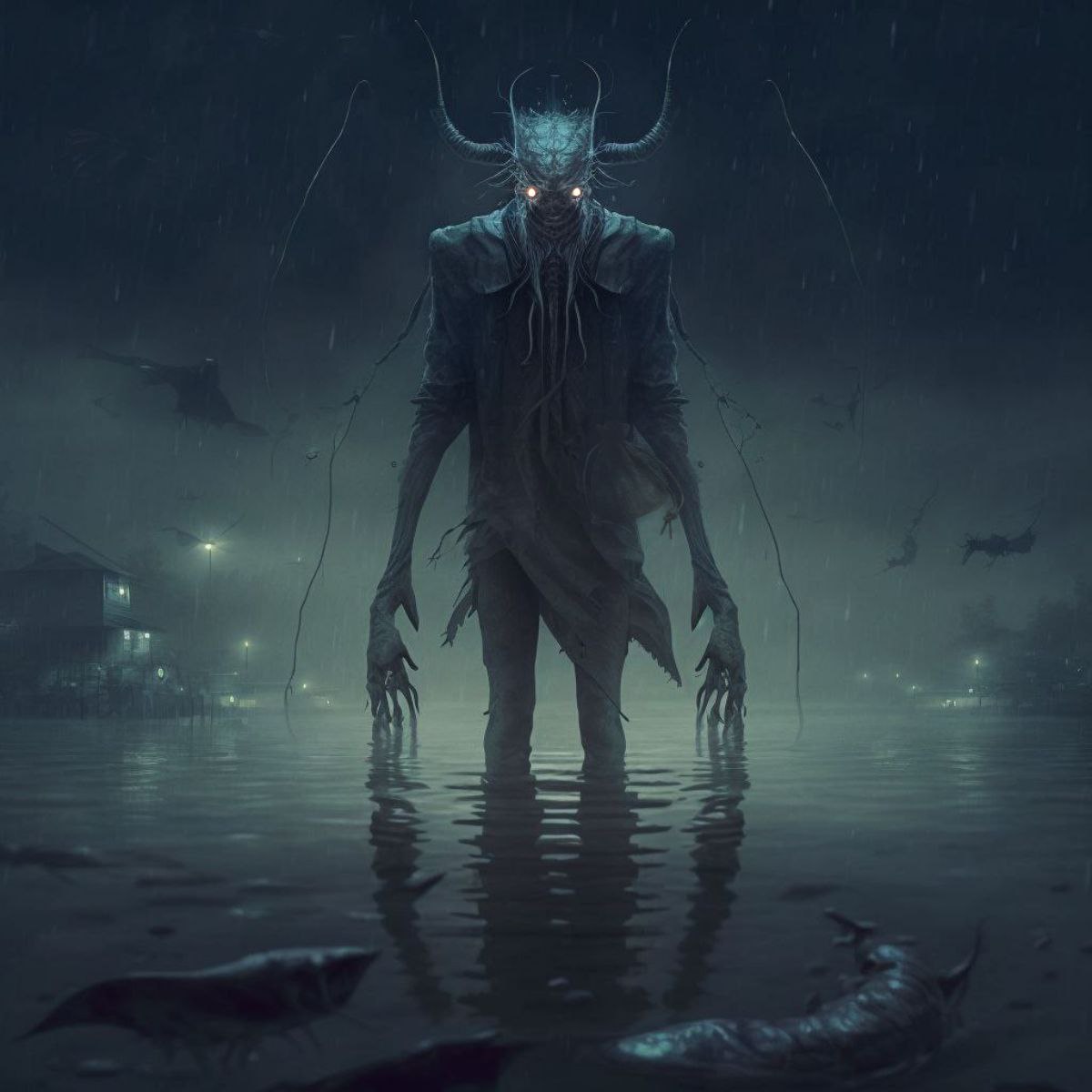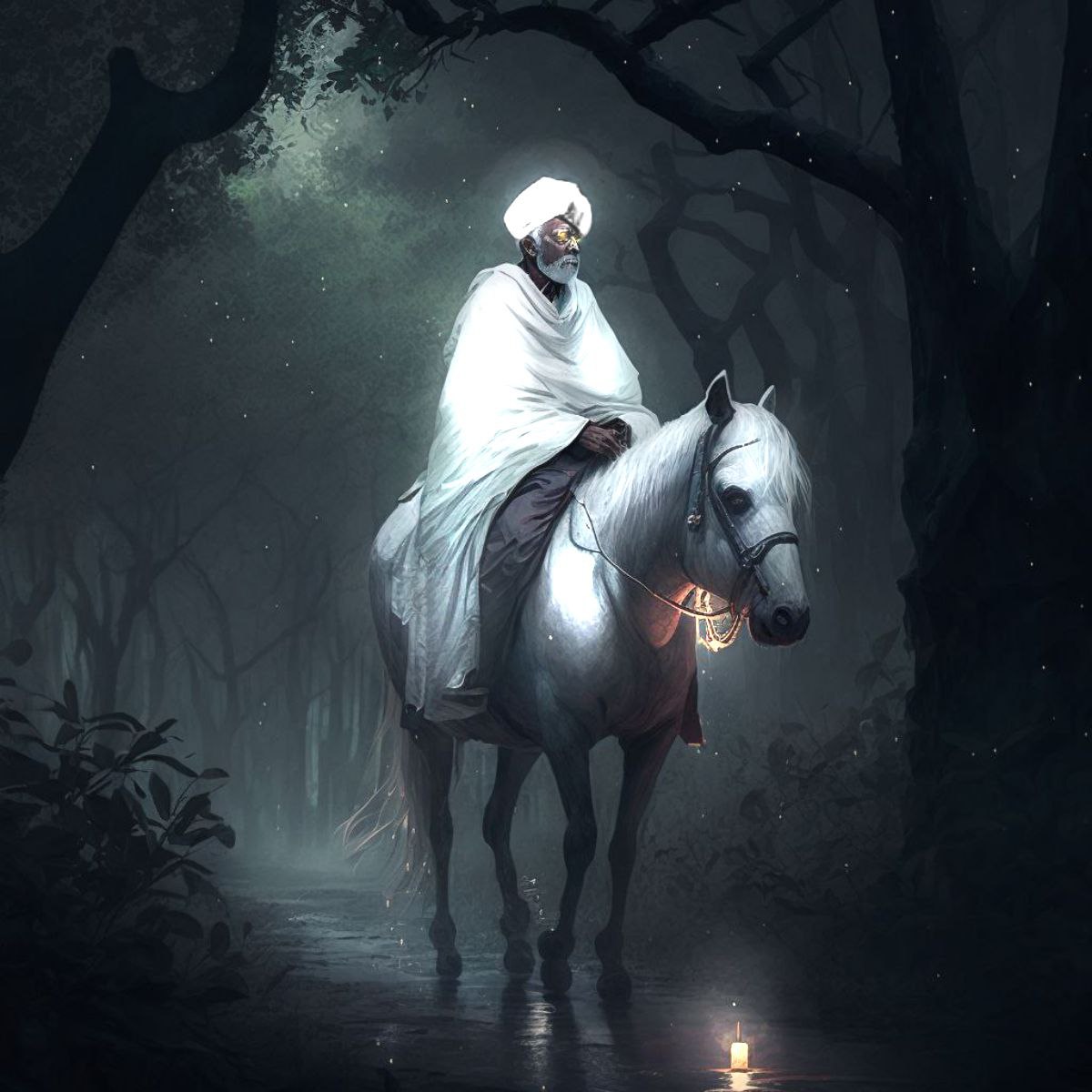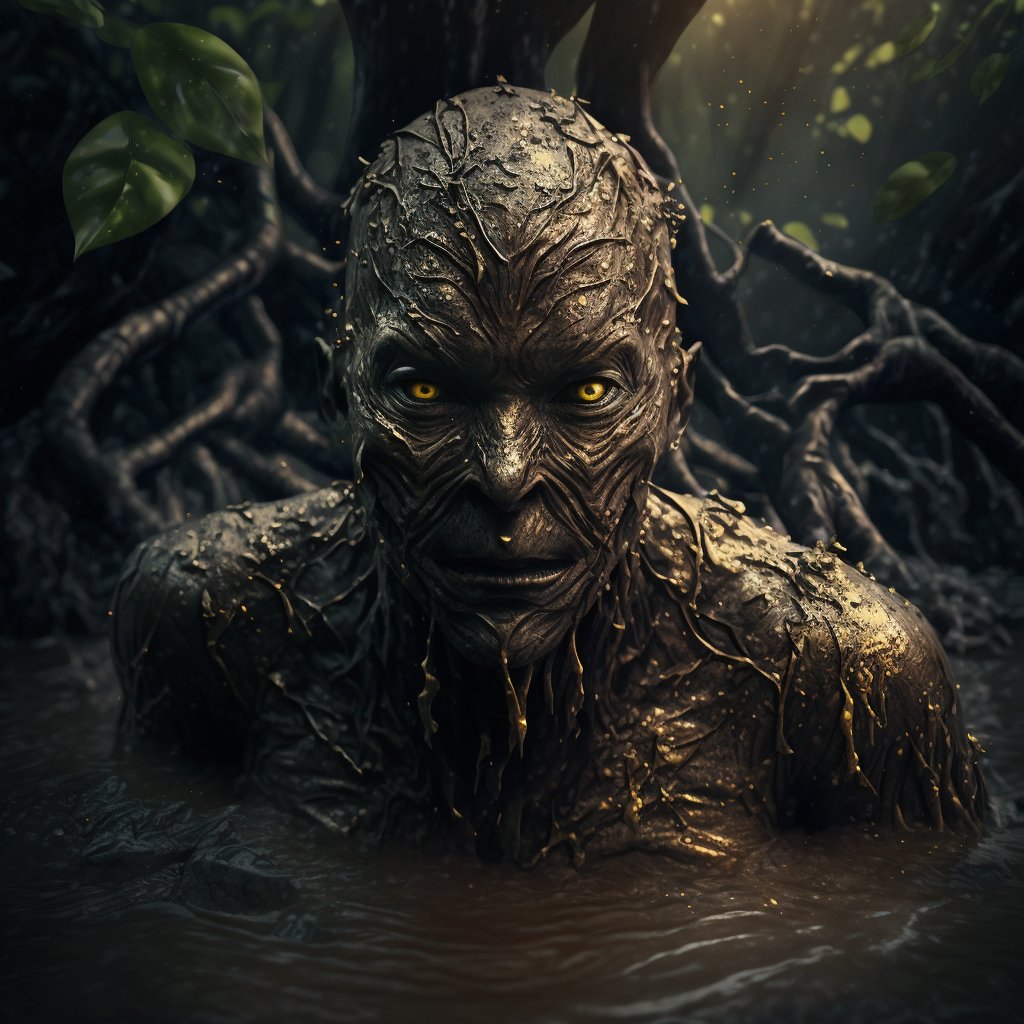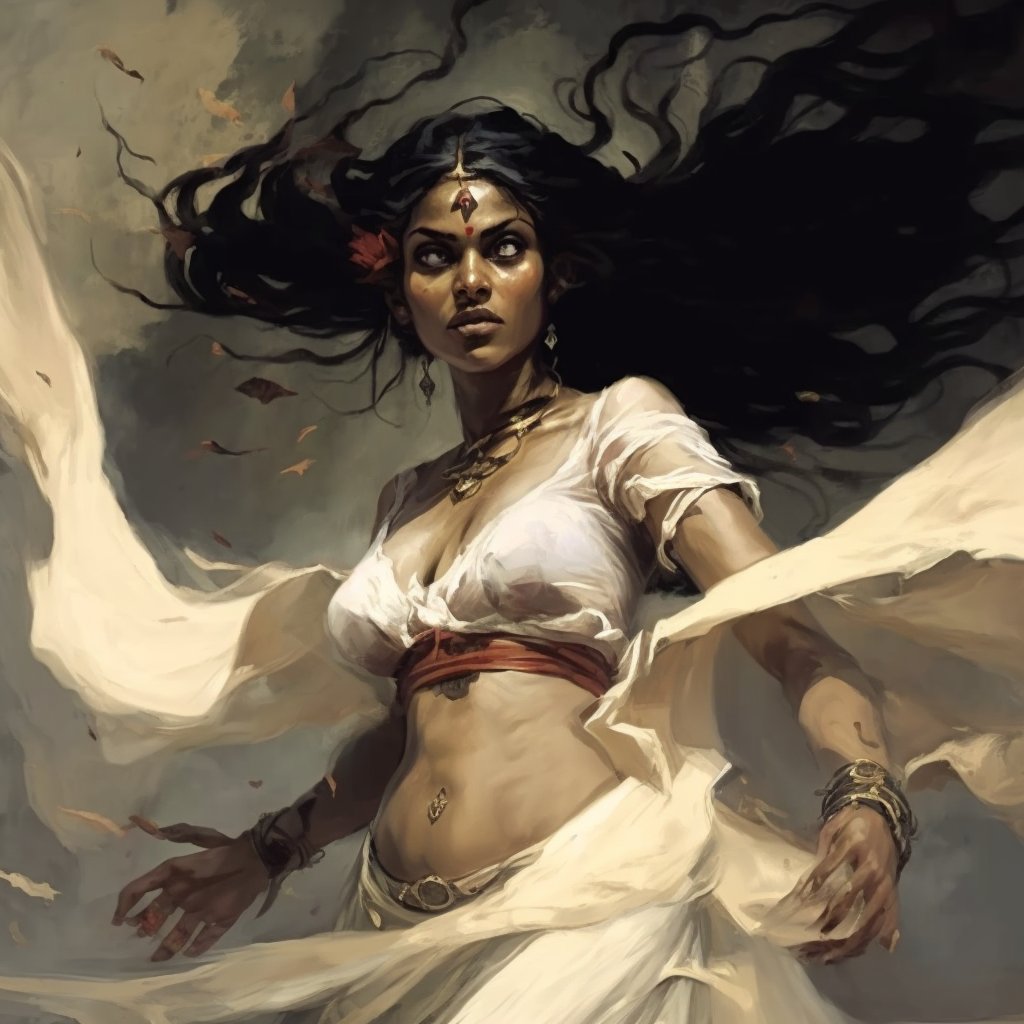
By Kukilkalyani Borgohain
As I listened to my grandfather, he recounted one of the many stories where he had encountered numerous incidents with ghosts. This narrative centres around a mysterious entity known as a “baak”. Are you familiar with the term?
For us Assamese people, the mere mention of this name evokes a sense of unease. However, for those who may not know, I’m about to share my grandfather’s account:
“Today, I had a close encounter, nearly finding myself buried upside down by a baak. It shapeshifted into Manik, who I am convinced will be as untraceable as all the missing individuals in our village. He demanded that I hand over all the fish, and when I replied, ‘Manik, stop joking,’ I observed a bloodthirsty gleam in his eyes. In response, I promptly handed over the fish, and he disappeared into the darkness of the night. Upon returning home, I made my way to Manik’s house, and to no surprise, his wife sombrely confirmed that Manik had not returned.”

The baak, a recurring figure in Assamese folklore, is often linked to bodies of water. This mischievous creature frequently stirs trouble for local fishermen and residents living in proximity to these aquatic environments. The creature holds a particular fascination for fish and, on occasion, exhibits dangerous behaviour, even leading to the drowning of unsuspecting victims.
According to legends, the baak possesses a unique pouch that safeguards its soul, rendering it impervious to conventional harm. To vanquish it, one must specifically target and destroy this pouch. Furthermore, the supernatural entity is ascribed an eerie ability – it can adopt the likeness of its victims posthumously or inhabit their bodies, subsequently residing with the victim’s family and causing them harm.
As a precautionary measure against encountering a baak, some suggest carrying a tattered fishing net, as they are believed to be averse to this item. In certain narratives, they are known to take on the form of a man, allowing it to seamlessly blend into the community, sometimes even forming relationships with its victims’ spouses.
Now, let’s delve into the realm of another remarkable entity within Assamese folklore – one that numerous witnesses assert to have encountered. This entity is often referred to as “the deity”. Those who claim to have glimpsed this extraordinary being recounted an experience characterised by an unparalleled sense of tranquillity. In their narratives, they describe a moment where everything transcends into a pristine, all-encompassing whiteness.

“Bura Dangoria”, known as “the old one” in Assamese folklore, is a revered and benevolent spirit. Often portrayed as an elderly figure clad entirely in white attire, including traditional clothing and a white turban, Bura Dangoria is considered a guardian spirit, closely linked with the safeguarding of Namghars, which are community places of worship in Assam.
Namghars hold great significance – they serve as venues for religious gatherings and ceremonies, housing sacred scriptures like the Bhagavad Gita, a highly revered text in Hinduism. Bura Dangoria is believed to have a unique connection with these places of worship, where its role is to protect the religious texts and maintain the sanctity of the Namghar.
Typically depicted riding a white horse, the imagery further underscores the association with purity and safekeeping. Bura Dangoria’s presence is viewed as auspicious, and it is thought to bring blessings while ensuring the protection of the sacred spaces under its watch. This spirit holds a central place in Assamese culture and spirituality, representing the values of protection and reverence for religious traditions.

While the Bura Dangoria imparts a sense of security, the entity known as “Bira” can have precisely the opposite effect, extracting vitality from both the mind and body. What makes Bira particularly disconcerting is that they can be domesticated by humans, obediently fulfilling their master’s wishes, albeit at the cost of demanding almost anything and everything.
Their requests can range from something as grotesque as demanding to consume a goat to even insisting that their masters consume the faeces of the Bira. If not adhered to, the masters may face the full spectrum of violence that a Bira is capable of unleashing. Consequently, this creature is believed to amass great wealth for their masters.
Biras are commonly linked with physical disturbances and violent actions, and their insatiable appetites necessitate their masters’ compliance. Once these demands are met, it is at the master’s beck and call. It is widely held that humans domesticate them to wreak havoc and misfortune upon those individuals they hold disdain for.
In the realm of Assamese folklore, one prominent female figure stands out: “Bordoisila”, often hailed as the Storm Goddess. She embodies the dynamic and, at times, tumultuous forces of nature. This revered deity is renowned for her dualistic symbolism, simultaneously carrying both destructive and rejuvenating attributes.

In Assamese tradition, Bordoisila is intricately linked with the changing seasons, particularly the advent of the monsoons. As the harbinger of rainfall, she wields the power to bestow fertility upon the land and reinvigorate its flora. Her presence is often regarded as a boon, particularly in the context of an agrarian society like Assam, where the livelihoods of many hinges upon agriculture.
Nonetheless, Bordoisila’s beneficence is inseparable from her fierce aspect. The monsoon rains she ushers in can be intense, occasionally resulting in floods and other natural calamities. This duality underscores her ability to bring both abundance and devastation.
She garners special reverence during the Rongali Bihu, a significant agricultural celebratory festival in Assam. This period signifies the joyous welcome of her arrival, with people singing and dancing in celebration of her presence.
Within Assamese culture, Bordoisila serves as a poignant reminder of the profound interconnection between nature and human existence.
Standing opposite to Bordoisila is Banphulani, a captivating and enigmatic female ghost, deeply entrenched in the wilderness and forests of Assamese folklore. She is often depicted as an exquisite and alluring woman, which serves as a facade to lure unsuspecting travellers into the heart of the dense woods.
One of the defining characteristics of Banphulani is her ability to beguile those who encounter her. Her primary intention is to create disorientation and confusion, leaving her victims utterly lost and vulnerable to the perils of the wilderness.
Her stories are frequently cautionary tales, warning individuals of the dangers that lurk in the wild and the consequences of straying from well-trodden paths.
This bewitching figure embodies the mysterious and unpredictable nature of the forests, and her stories serve as a reminder of the importance of respecting and navigating the wilderness with caution.
As twilight descends over the serene landscapes of Assam, a chilling silence envelops the region, shrouding its hidden secrets in an eerie embrace. Their stories, passed down through generations, whisper tales of the supernatural that stir the imagination and send shivers down one’s spine.
In the heart of these mystical forests and along the tranquil riverbanks, spirits of the wilderness await those who dare to wander off the beaten path. Banphulani beckons, a beautiful spectre concealing sinister intent; Bura Dangoria and Bira, benevolent and malevolent, respectively, offer contrasting encounters with the spectral world. Amid the lush paddy fields, the storm goddess Bordoisila reminds us of the delicate balance between blessing and calamity, while in the dark corners of Assam’s water bodies, the baak wails with its multi-shifted voices.






